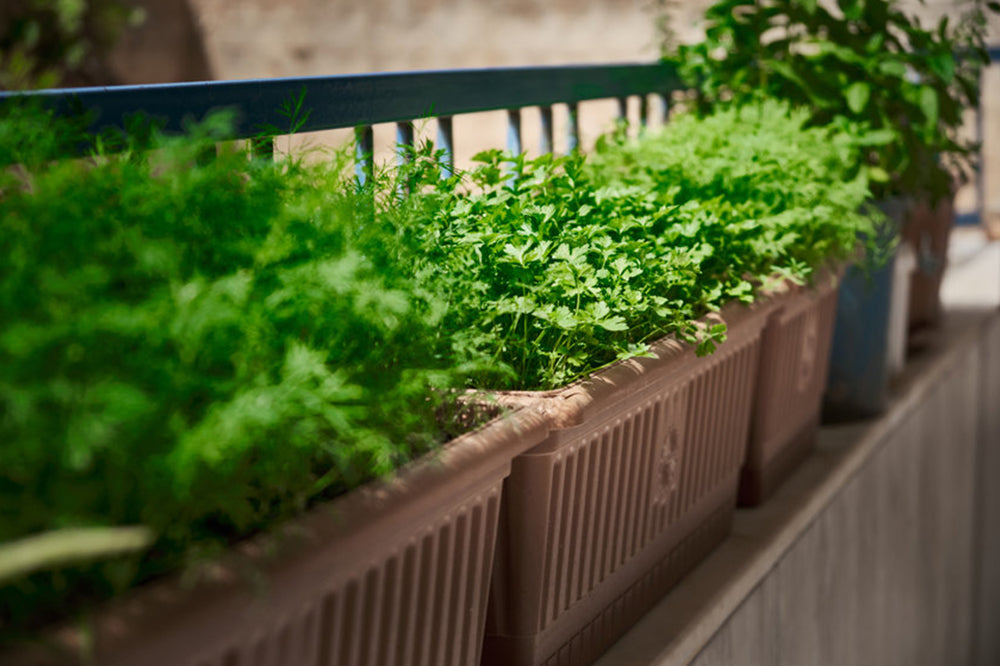Step-by-Step Guide to Growing Vegetables on Your Balcony
Urban gardening has become increasingly popular as people look for ways to lead more sustainable lives. Growing vegetables on your balcony is an excellent way to enjoy fresh produce, reduce your carbon footprint, and beautify your space. Whether you're a seasoned gardener or a beginner, this guide will help you start your balcony vegetable garden with ease.
Step 1: Assess Your Space and Light
Before planting anything, evaluate your balcony's layout and the amount of sunlight it receives. Most vegetables need at least 4-6 hours of direct sunlight daily. If your balcony is partially shaded, choose vegetables like lettuce, spinach, and kale, which thrive in lower light.
Step 2: Choose Your Vegetables
Select vegetables that suit your space, climate, and preferences. Some great options for balcony gardens include:
Tomatoes: Ideal for containers, require plenty of sunlight.
Herbs: Basil, parsley, and mint grow well in small pots.
Peppers: Compact varieties are perfect for balconies.
Leafy Greens: Fast-growing and versatile.
Radishes and Carrots: Perfect for deep pots.
Step 3: Gather Essential Supplies
You'll need the following items to start your balcony garden:
Containers: Use pots, hanging baskets, or even repurposed containers. Ensure they have drainage holes.
Potting Soil: Choose high-quality, well-draining soil enriched with organic matter.
Fertilizer: Opt for organic or slow-release fertilizers to nourish your plants.
Watering Can or Hose: Balcony gardens need regular watering.
Seeds or Seedlings: Start with healthy plants or quality seeds.
Step 4: Plan Your Layout
Maximize your space by utilizing vertical gardening techniques. Install shelves, hanging planters, or trellises to grow vining plants like cucumbers or beans. Group plants with similar sunlight and watering needs together for easier maintenance.
Step 5: Plant Your Vegetables
Follow these steps to plant your vegetables:
Fill containers with potting soil, leaving space for watering.
Plant seeds or seedlings according to the instructions on the seed packet.
Water thoroughly after planting.
Step 6: Care for Your Plants
To ensure your balcony garden thrives, follow these care tips:
Watering: Check soil moisture regularly. Water when the top inch feels dry.
Pruning: Remove yellowing leaves and trim overgrown plants.
Pest Control: Use natural remedies like neem oil to tackle pests.
Fertilizing: Feed your plants every 2-4 weeks with appropriate fertilizers.
Step 7: Harvest and Enjoy
Harvest vegetables when they’re ripe and ready to enjoy. Regular harvesting encourages plants to produce more. Use your homegrown produce in salads, soups, and other dishes to savor the fruits of your labor.
Final Tips for Success
Start Small: Begin with a few plants to avoid feeling overwhelmed.
Experiment: Try growing different vegetables each season.
Stay Consistent: Regular care and observation are key to a healthy garden.
By following this step-by-step guide, you can transform your balcony into a thriving vegetable garden. Not only will you enjoy fresh, organic produce, but you'll also experience the satisfaction of cultivating your own food. Happy gardening!


